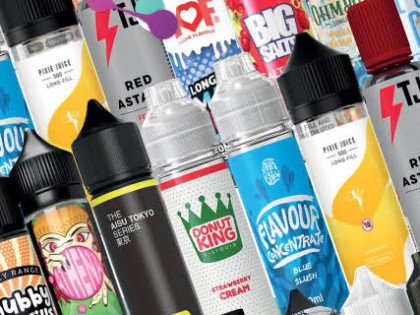Cambridge University says the team of scientists, led by researchers at Cambridge and Warwick worked with others at Fudan University in China. They examined brain imaging and behavioural data from over 800 young people at the ages of 14, 19 and 23.
They discovered that teens who had begun smoking by the time they were 14 years old had prominently “less grey matter in a section of the left frontal lobe linked to decision-making and rule breaking.”
Researchers say that grey matter “is the brain tissue that processes information and contains all of the organ’s neurons. While brain development continues into adulthood, grey matter growth peaks before adolescence.”
Low grey matter volume in the left side of the ventromedial prefrontal cortex may be an “inheritable biomarker” for nicotine addiction, say the researchers – with implications for prevention and treatment.
In addition to the reduction in grey matter on the left, the team also found a drop in the right part of the same brain region.
Importantly, the team says, loss of grey matter in the right prefrontal cortex appears to speed up only after someone has started smoking. This region is linked to the seeking of sensations.
The team argues that less grey matter in the left forebrain could lower cognitive function and lead to “disinhibition”: impulsive, rule-breaking behaviour arising from a limited ability to consider consequences. This may increase the chances of smoking at a young age.
Once a nicotine habit takes hold, grey matter in the right frontal lobe shrinks, which may weaken control over smoking by affecting 'hedonic motivation': the way pleasure is sought and managed. Excessive loss of grey matter in the right brain was also linked to binge drinking and marijuana use.
The team says that these findings point to a damaged “neurobehavioural mechanism” that can lead to nicotine use starting early and becoming locked into long-term addiction.
Professor Trevor Robbins, co-senior author from Cambridge’s Department of Psychology, said: “The initiation of a smoking habit is most likely to occur during adolescence. Any way of detecting an increased chance of this, so we can target interventions, could help save millions of lives.
“In our study, reduced grey matter in the left prefrontal cortex is associated with increased rule-breaking behaviour as well as early smoking experiences. It could be that this rule-breaking leads to the violation of anti-smoking norms.”
Co-author Professor Barbara Sahakian added: “The ventromedial prefrontal cortex is a key region for dopamine, the brain’s pleasure chemical. As well as a role in rewarding experiences, dopamine has long been believed to affect self-control.
“Less grey matter across this brain region may limit cognitive function, leading to lower self-control and a propensity for risky behaviour, such as smoking.”
Robins continued: “Both questionnaires examine the pursuit of thrilling experiences, but they measure distinct behaviours. The sensation seeking scale focuses on pleasurable experiences, while the novelty seeking questionnaire includes items on impulsiveness and rule-breaking.”
Professor Tianye Jia from Fudan University concluded: “Less grey matter in the left frontal lobes is linked to behaviours that increase the likelihood of smoking in adolescence.
“Smokers then experience excessive loss of grey matter in the right frontal lobes, which is linked to behaviours that reinforce substance use. This may provide a causal account of how smoking is initiated in young people, and how it turns into dependence.”
The study used data from the IMAGEN project and is published in the journal Nature Communications.
Dave Cross
Journalist at POTVDave is a freelance writer; with articles on music, motorbikes, football, pop-science, vaping and tobacco harm reduction in Sounds, Melody Maker, UBG, AWoL, Bike, When Saturday Comes, Vape News Magazine, and syndicated across the Johnston Press group. He was published in an anthology of “Greatest Football Writing”, but still believes this was a mistake. Dave contributes sketches to comedy shows and used to co-host a radio sketch show. He’s worked with numerous start-ups to develop content for their websites.
Join the discussion
Harm Reduction For The Rich
The United Kingdom risks becoming a harm reduction country only for the wealthy, according to Michael Landl of the World Vapers’ Alliance
Longfills as an Alternative to Disposables
The disposable vape ban will impact many people, but there’s no reason to be concerned… Grab yourself a pod kit and a Longfill and you’ll be back to vaping the way you want to, just in a cheaper, more environmentally friendly and legal way.
COP10 is a Threat to Safer Nicotine Products
The EU obscures its position on low-risk alternatives to smoking before the WHO COP10 conference in Panama, starting Monday
Nicotine Is Not A Culprit
Planet of the Vapes has always encouraged smokers to use the quit product that works best for them, and snus is a product that seems to be unfairly blocked because it contains nicotine






-listing400.jpg)




